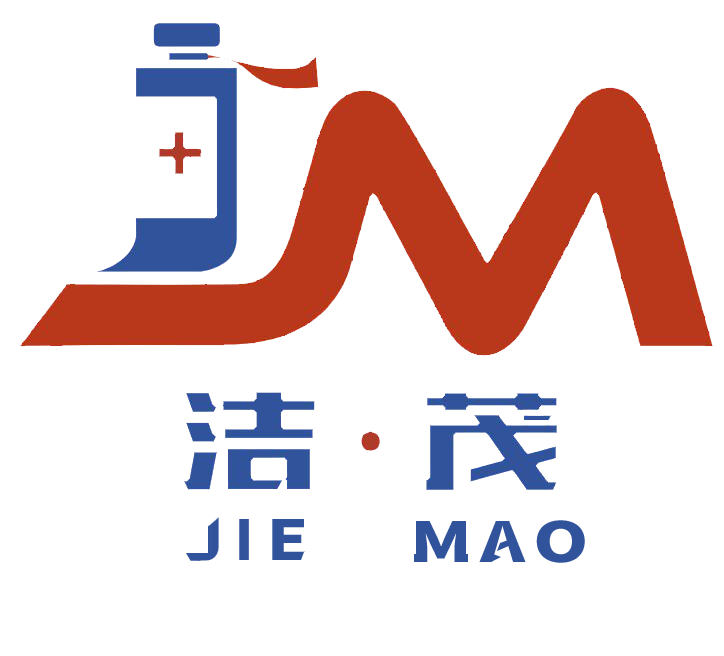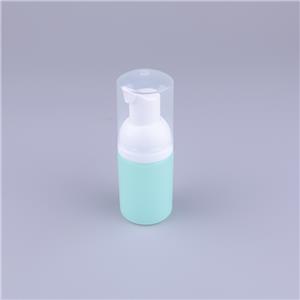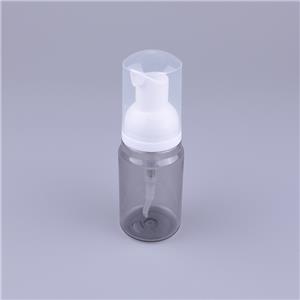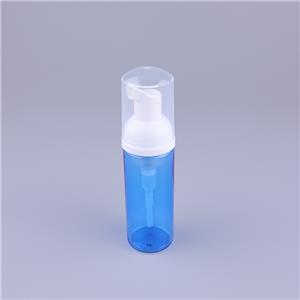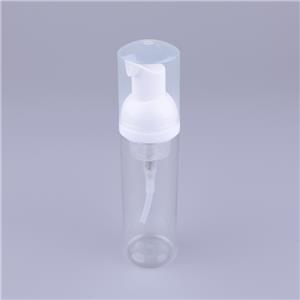- Home
- >
- News
- >
- Public Information
- >
- PET raw materials
PET raw materials
PET raw materials: high-performance polyester materials and their diverse applications
Polyethylene terephthalate (PET) is a linear aromatic polyester produced by the condensation reaction of terephthalic acid and ethylene glycol. As one of the five general engineering plastics, PET has become an indispensable polymer material in modern industry since its industrial production in the 1940s due to its excellent comprehensive performance, wide range of raw material sources, and mature production processes. From daily mineral water bottles to polyester clothing, from food packaging films to automotive components, PET has penetrated into various fields of production and life with its unique advantages, promoting the sustainable development of the materials industry.
1、 Molecular Structure and Core Characteristics of PET
The molecular structure of PET is the fundamental factor determining its performance. Its repeating unit is - OC-C ₆ H ₄ - COO-CH ₂ CH ₂ -, and the molecular chain contains rigid benzene rings and flexible methylene segments. This structure endows PET with both rigidity and a certain degree of toughness.
In terms of mechanical properties, PET has high tensile strength and elastic modulus, moderate elongation at break, and better impact resistance than brittle plastics such as polystyrene. Untreated PET has good rigidity, and after biaxial stretching treatment, its strength can be greatly improved. For example, the tensile strength of biaxial stretched PET film can reach 150-200MPa, which is close to 1/10 of steel. This high-strength characteristic makes it outstanding in packaging and structural materials.
In terms of thermal performance, the glass transition temperature of PET is about 70-80 ℃, with a melting point between 240-260 ℃. The short-term use temperature can reach 120 ℃, and the long-term use temperature is 80-100 ℃, which can meet the temperature requirements of most daily and industrial scenarios. However, the thermal deformation temperature of PET is relatively low, and it is prone to deformation at high temperatures under stress. Therefore, pure PET is mostly used in non load bearing or low load high-temperature scenarios. To improve heat resistance, it is necessary to achieve it through enhanced modification.
Barrier performance is one of the core advantages of PET, which has a good barrier effect on oxygen, carbon dioxide, water vapor, etc., and can effectively delay the oxidation deterioration and moisture loss of the contents. Especially for bottle grade PET, after the biaxial stretching process, the molecular chain arrangement is more regular, and the barrier properties are further improved, making it the preferred material for packaging beverages, foods, cosmetics, etc. For example, carbonated beverage bottles need to withstand a certain internal pressure, and the barrier properties of PET can effectively prevent carbon dioxide leakage.
In terms of chemical resistance, PET has good tolerance to most organic solvents, acids, and bases, and is not easily corroded at room temperature. However, hydrolysis reactions may occur under strong alkaline conditions or high temperatures. This characteristic makes it suitable for storing acidic beverages (such as juice), neutral water, etc., but not for long-term storage of strongly alkaline liquids.
In addition, PET has good transparency and glossiness, with a light transmittance of over 90% after processing, which can clearly display the contents and enhance the visual appeal of the product; At the same time, PET is easy to process and can be made into various forms of products such as bottles, films, sheets, fibers, etc. through injection molding, blow molding, extrusion and other processes.
2、 Production process and raw material sources of PET
The industrial production of PET mainly uses terephthalic acid (PTA) and ethylene glycol (EG) as raw materials, which are generated through condensation reaction. Its production process has formed a mature and stable technical system, and the core is to precisely control the polymerization reaction process to obtain products with specific properties.
In terms of raw material sources, terephthalic acid (PTA) is mainly produced through the oxidation of xylene (PX), which comes from the extraction of aromatic hydrocarbons in petroleum refining; Ethylene glycol (EG) is mainly produced by the oxidation of ethylene to produce epoxyethane, which is then hydrated. Ethylene also comes from the cracking of petroleum or natural gas. With the increasing demand for environmental protection and sustainable development, progress has been made in the research and development of bio based raw materials. Bio based ethylene glycol can be produced through biomass fermentation, and then polymerized with PTA to produce some bio based PET, reducing dependence on fossil resources.
The production process of PET mainly includes two core stages: esterification and condensation. According to the production scale and product demand, it can be divided into two processes: batch polymerization and continuous polymerization.
The esterification stage involves the esterification reaction between PTA and EG under high temperature and pressure, resulting in the formation of dihydroxyethyl terephthalate (BHET) and water. The reaction temperature is usually controlled at 220-260 ℃ and the pressure is 0.2-0.5MPa, and the reaction is accelerated by catalysts such as antimony and titanium catalysts. The esterification reaction is a reversible reaction, and the generated water needs to be removed in a timely manner to promote the forward reaction and ensure that the esterification rate reaches over 95%.
The condensation stage is when BHET undergoes condensation reaction under higher temperature and vacuum conditions, removing ethylene glycol and forming PET polymer chains. The reaction temperature is raised to 270-290 ℃, and the pressure is reduced to below 100Pa. Small molecule products (ethylene glycol) are removed through a vacuum environment to promote the growth of molecular chains. The time and process parameters of the condensation reaction directly affect the molecular weight and molecular weight distribution of PET, thereby determining product performance. The continuous polymerization process achieves continuous production through multiple series reactors, which has the advantages of high production efficiency and stable product quality, and is suitable for large-scale industrial production; Intermittent polymerization has strong flexibility and is suitable for small-scale and multi variety production.
After the polymerization reaction is completed, the melted PET is cast and cut into PET slices, which are solid PET raw materials. Slices need to be dried to remove moisture (moisture content should be below 0.005%), in order to avoid a decrease in molecular weight due to hydrolysis during subsequent processing. According to different application requirements, the intrinsic viscosity (IV value) of PET slices can be controlled by adjusting process parameters. The IV value of bottle grade PET slices is usually 0.7-0.8dL/g, membrane grade is 0.6-0.7dL/g, and fiber grade is 0.6-0.9dL/g.
Co polymerization modification is an important means to expand the performance range of PET. By introducing third monomers (such as cyclohexanedimethanol and isophthalic acid) during the polymerization process, the molecular chain structure can be altered to obtain modified PET products. For example, PET is copolymerized with cyclohexanedimethanol to produce PETG, which significantly improves its flexibility, impact resistance, and processability, making it suitable for high transparency packaging and medical devices; Adding isophthalic acid can reduce the crystallinity of PET, improve its processing performance and chemical resistance.
3、 Classification and performance differences of PET
According to the application field and performance requirements, PET can be divided into four categories: bottle grade PET, film grade PET, fiber grade PET, and engineering grade PET. Different types of PET have significant differences in molecular weight, crystallinity, processing performance, etc., to meet the needs of different scenarios.
Bottle grade PET is the most widely produced PET variety, mainly used for the production of various plastic bottles. It has a high intrinsic viscosity (0.7-0.8dL/g), excellent transparency, mechanical strength, and barrier properties, and outstanding impact and internal pressure resistance. To meet the requirements of blow molding, bottle grade PET chips need to have good melt flowability and processing stability. After injection molding into preforms, they are then made into bottles through biaxial stretching blow molding technology. The stretching process orients the molecular chains, further improving strength and barrier properties. Bottle grade PET can be divided into water bottle grade, carbonated beverage bottle grade, hot filled bottle grade, etc. According to their applications, hot filled bottle grade PET can improve its heat resistance through copolymerization modification and can withstand hot filling processes at 85-95 ℃.
Film grade PET is mainly used for the production of various thin film products, with a slightly lower intrinsic viscosity than bottle grade (0.6-0.7dL/g), and has good mechanical properties, heat resistance, and insulation. PET film is made by extrusion casting or biaxially oriented stretching process. After longitudinal and transverse stretching, the strength, transparency, and barrier properties of biaxially oriented PET (BOPET) film are greatly improved. It is widely used in food packaging films (such as steaming bags), insulation films (such as capacitor films), card protection films, photovoltaic backsheet films, etc. Film grade PET can improve the performance of the film by adding lubricants, anti adhesion agents, etc., such as reducing the friction coefficient for easier winding and processing.
Fiber grade PET is the core raw material in the textile field, namely polyester (polyester fiber) raw material, with a wide range of intrinsic viscosity (0.6-0.9dL/g), and the parameters are adjusted according to the fiber variety (filament, staple). Fiber grade PET is made into polyester fibers through melt spinning process, which has the advantages of high strength, wear resistance, wrinkle resistance, and easy washing. It is widely used in clothing, home textiles, and industrial textiles (such as geotextiles and filter cloth). By adjusting the spinning process, polyester fibers with different properties can be produced, such as high-strength and low elongation fibers for industrial use, and ultrafine fibers for high-end fabrics.
Engineering grade PET is a high-performance PET obtained through reinforcement, toughening and other modification treatments, mainly used to replace metals or other engineering plastics in the production of structural components. By adding reinforcing materials such as glass fiber and carbon fiber, the strength, rigidity, and heat resistance of PET can be significantly improved. The tensile strength of glass fiber reinforced PET can reach over 150MPa, and the thermal deformation temperature can exceed 200 ℃. It is suitable for automotive parts (such as door handles, instrument panels), electronic and electrical casings, mechanical parts, etc. Engineering grade PET can also improve its impact performance by adding toughening agents (such as elastomers), or by adding flame retardants to meet fire protection requirements.
4、 The diverse application areas of PET
PET, with its excellent comprehensive performance and diverse processing methods, has been widely used in various fields such as packaging, textiles, electronics, automobiles, and construction, becoming an indispensable material in modern industry and daily life.
The packaging field is one of the most widely used areas for PET, with bottle grade PET dominating. In beverage packaging, PET bottles have become the preferred packaging container for mineral water, carbonated drinks, fruit juice, tea drinks, etc. due to their transparency, lightweight, impact resistance, and good barrier properties. More than 500 billion PET bottles are produced worldwide every year. PET bottles continuously reduce material consumption through lightweight design, while also having good recyclability, promoting the development of circular economy. In food packaging, BOPET film is used to make cooking bags and vacuum packaging films, which can withstand high temperature sterilization at 121 ℃ and extend the shelf life of food; PET sheets are thermoformed into vacuum formed boxes for packaging meat, fruits, pastries, etc., which have both transparency and protection.
In the textile industry, polyester fibers made from fiber grade PET are the most widely produced synthetic fibers, accounting for over 60% of global fiber production. Polyester filament is used to make clothing fabrics such as shirts, dresses, and sportswear, and has the characteristics of being stiff and easy to maintain; Blending polyester staple fibers with natural fibers such as cotton and wool to improve the wear resistance and shape retention of the fabric; Industrial polyester fiber is used to make geotextiles (to reinforce soil), filter materials (such as air filters), seat belts, tents, etc. Its high strength and weather resistance meet industrial needs.
In the field of electronic appliances, PET film plays an important role. BOPET film is used to make capacitor films, motor insulation films, flexible circuit board substrates, etc. due to its excellent insulation performance and heat resistance; PET sheets are printed and stamped into decorative panels, nameplates, and other electronic devices. After modification, engineering grade PET is used to make components such as connectors, switch housings, display brackets, etc., with both insulation and mechanical strength.
In the automotive industry, engineering grade PET is reinforced and modified for the production of automotive interior parts (such as instrument panels and door panels), exterior parts (such as rearview mirror housings), and functional components (such as radiator grilles). Its lightweight characteristics can reduce fuel consumption, and its chemical and weather resistance meet the long-term needs of automotive use. PET is also used for insulation of automotive wiring harnesses, seat fabrics (polyester fabrics), etc., further expanding its application in the automotive field.
In the field of architecture, PET material is used to produce thermal insulation materials (such as PET insulation cotton), waterproofing membranes, decorative films, etc. PET insulation cotton has the characteristics of lightweight, flame retardant, and good insulation effect, and is suitable for building exterior wall insulation; PET waterproofing membrane is resistant to aging and puncture, used for roof and basement waterproofing projects; PET decorative film is applied to the surface of the board to enhance its aesthetics and wear resistance.
In addition, PET is used in the medical field to make infusion bottles, syringe casings, etc. Its chemical stability and hygiene meet medical standards; In the field of 3D printing, PET wire is used for FDM printing technology to produce high-strength models and parts.
5、 The Environmental Protection and Development Trends of PET
With the increasing global awareness of environmental protection, the environmental friendliness and sustainable development of PET have become the core concerns of the industry. Its recycling and green production technologies continue to break through, promoting the transformation of the PET industry towards a circular economy.
The environmental advantage of PET lies in its good recyclability and high recycling value. Waste PET products (such as PET bottles, films, fibers) can be recycled through two methods: physical recycling and chemical recycling. Physical recycling is the process of sorting, cleaning, crushing, and melting waste PET into recycled PET slices. Recycled PET can be used to produce bottle grade, film grade, fiber grade, and other products. For example, recycled PET bottles are used for non food packaging, and recycled fibers are used to make carpets and clothing fabrics (such as recycled polyester fabrics). Chemical recycling decomposes PET into PTA and EG monomers through hydrolysis, alcoholysis and other technologies, and uses them as raw materials to produce new PET, achieving closed-loop circulation. Chemical recycling can treat complex and polluted PET waste, and the performance of recycled raw materials is close to that of raw materials, which can be used in the field of food contact.
At present, the main challenge facing PET recycling is the imperfect recycling system. The global PET bottle recycling rate is about 50%, and some regions have low recycling rates due to insufficient awareness of classified recycling and high recycling costs; Meanwhile, the performance stability and hygiene of recycled PET need to be strictly controlled to avoid impurities affecting product quality.
In the future, the development of PET will move towards "high-performance, green, and functional" directions. In terms of high performance, molecular design and modification technology are used to enhance the heat resistance, impact resistance, and barrier properties of PET, such as developing high-temperature resistant PET for hot filling and engineering fields, and high barrier PET for packaging high value-added products.
In terms of greening, the research and development of bio based PET is accelerating, with the goal of achieving 100% bio based raw material production and reducing carbon footprint; At the same time, optimizing recycling technology, improving the purity and efficiency of physical recycling, expanding the industrial scale of chemical recycling, and building a complete cycle system of "production consumption recycling regeneration".
In terms of functionalization, develop PET materials with special functions, such as antibacterial PET for food packaging, flame retardant PET for electronics and construction fields, and intelligent responsive PET (such as temperature sensitive color change and controllable degradation) for high-end packaging and medical fields. In addition, the composite technology of PET with other materials (such as PET/graphene composites) will further expand its performance boundaries and meet the needs of emerging fields.
PET, as a high-performance polymer material, reflects the close integration of materials science and industrial demand in its development process. From daily packaging to high-end industrial applications, PET supports the operation of modern society with its unique advantages. With the advancement of environmental protection technology and the promotion of circular economy, PET will achieve sustainable development while maintaining practicality, contributing to a green and low-carbon society.
